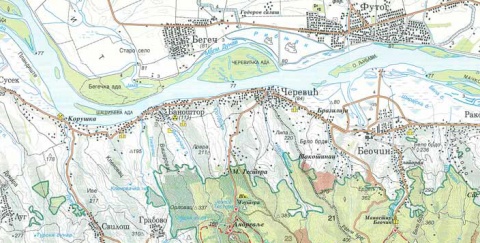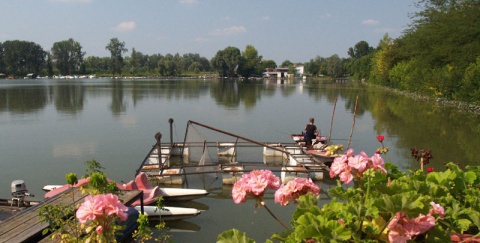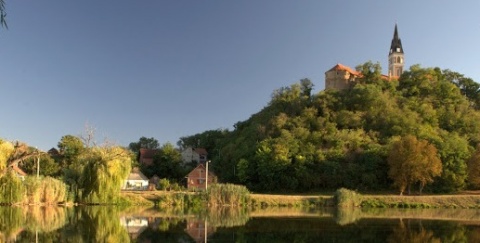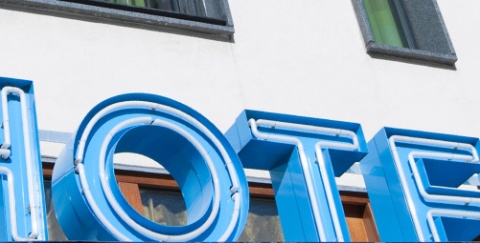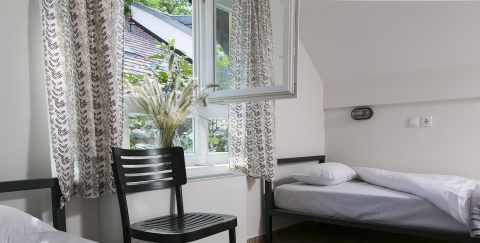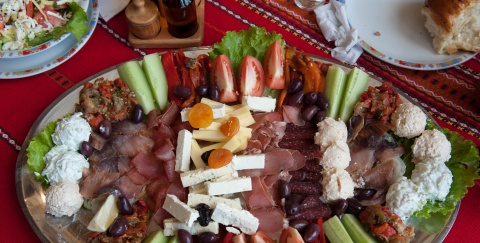

Novi Sad
At the foot of the Fruška Gora hills, in the shadow of the Petrovaradin Fortress – the Gibraltar of the Danube – is Novi Sad, a city with a history just over 300 years long. Despite the fact that the city itself has a relatively short history, the area in which it is found has a very long and i...
Country: Serbia
Here, where three rivers converge and meet – the Danube, the Tisa and the Sava – the cultures of East and West have come together, and so too Eastern Orthodoxy, Roman Catholicism and Islam.
Around this fortification a settlement began to develop, populated by traders, craftsmen and soldiers. This settlement was first called Racko Selo (‘Serbian village’), later to be known as Petrovaradinski Šanac (a šanac is a castle moat).
After the wars of the early 18th century, when the settlement began to see growth, its citizens sought and bought their liberty (at a cost of 80,000 forints) from Empress Maria Theresa, gaining it the status of a free royal city, and called it Novi Sad.
Hence Novi Sad has enjoyed city status since 1st February 1748. Since its founding, Novi Sad has been a multinational city, with a majority Serbian population, but with a great many other nationalities too: Hungarians, Croats, Slovaks, Ruthenians, Greeks, Cincars, Jews, Romanians and Roma, to name a few – and this multiethnic atmosphere remains today.
The first Orthodox churches to be built were the Church of St Nicholas (Nikolajevska church), the Church of St George, Church of the Ascension (Uspenska church) and the Almaš Church.
Places of worship were built by the members of other faiths too: Roman Catholics, Greek Catholics, Reformed and other Protestant denominations, Armenians and Jews.
Besides spiritual considerations, great attention was paid to education and culture. Very important year for Novi Sad was 1864 as this was the year when Matica Srpska, the oldest Serbian cultural institution, founded in Budapest in 1826, was moved to Novi Sad.
Other cultural institutions developed alongside Matica – the Matica Srpska Library, the Matica Srpska Gallery, the Museum of Vojvodina, Novi Sad City Museum to name a few. Novi Sad has also been referred to as the Serbian Athens – referring to the golden age of culture in Novi Sad – thanks not just to its institutions of culture, science and art, but also to its numerous distinguished citizens. These include Svetozar Miletić, Jovan “Zmaj” Jovanović, Platon Atanacković, Sava Tekelija and Jovan and Marija Trandafil. Another famous figure from the history of Novi Sad was Mileva Marić-Einstein who lived in Novi Sad for a time at the beginning of the 20th century with her husband.
Trade fairs also have a long tradition in Novi Sad, and it was from this tradition that the Novi Sad Fair arose.
The whole year round, major events are held at the Fair site, one of the biggest, most important and with the greatest number of visitors is the Agricultural Fair. Novi Sad is also hard to imagine without cafés, entertainment and events. The permanent fixtures on Novi Sad’s calendar of events have their roots in a variety of spheres of culture and life. Especially important among them, for their tradition and originality, are the Sterijino Pozorje theatre festival, the Zmaj Children’s Games, the Vojvođanska Tamburica festival and of course the all-important EXIT Festival and Festival of Street Musicians. The people of Novi Sad have also long been active in sports, and many of its sportsmen and women have represented their country at the Olympic Games. Sports clubs from Novi Sad have achieved significant results in all sports, at all levels. One of the most popular sports in Novi Sad, in which more trophies have been won than most, is volleyball, while other events with a long tradition include the Novi Sad Marathon and the Fruška Gora Marathon.
One of the most popular places for recreation in Novi Sad during the summer months is the famous Štrand beach on the Danube.Novi Sad is remarkable in that it has succeeded in preserving the important natural and cultural features in its surroundings. Natural features include first and foremost the Koviljsko-Petrovaradinski Rit Special Nature Reserve, a wetland of great importance, which harbours vital bird habitats and is one of the most important fish spawning grounds on the entire course of the Danube.
Also of great importance is the Fruška Gora National Park, a refuge for a great number of rare plant and animal species. In and around these natural sites there are some vitally important cultural properties, which are easily accessible but still untouched by large-scale tourism.
These are just some of the reasons to visit the city of Novi Sad – its rich history, visible all around even today, and its people, who guard this history and are only too happy to retell it. People who, in these hurried times, have succeeded in retaining their character and connection with the past.
Around this fortification a settlement began to develop, populated by traders, craftsmen and soldiers. This settlement was first called Racko Selo (‘Serbian village’), later to be known as Petrovaradinski Šanac (a šanac is a castle moat).
After the wars of the early 18th century, when the settlement began to see growth, its citizens sought and bought their liberty (at a cost of 80,000 forints) from Empress Maria Theresa, gaining it the status of a free royal city, and called it Novi Sad.
Hence Novi Sad has enjoyed city status since 1st February 1748. Since its founding, Novi Sad has been a multinational city, with a majority Serbian population, but with a great many other nationalities too: Hungarians, Croats, Slovaks, Ruthenians, Greeks, Cincars, Jews, Romanians and Roma, to name a few – and this multiethnic atmosphere remains today.
The first Orthodox churches to be built were the Church of St Nicholas (Nikolajevska church), the Church of St George, Church of the Ascension (Uspenska church) and the Almaš Church.
Places of worship were built by the members of other faiths too: Roman Catholics, Greek Catholics, Reformed and other Protestant denominations, Armenians and Jews.
Besides spiritual considerations, great attention was paid to education and culture. Very important year for Novi Sad was 1864 as this was the year when Matica Srpska, the oldest Serbian cultural institution, founded in Budapest in 1826, was moved to Novi Sad.
Other cultural institutions developed alongside Matica – the Matica Srpska Library, the Matica Srpska Gallery, the Museum of Vojvodina, Novi Sad City Museum to name a few. Novi Sad has also been referred to as the Serbian Athens – referring to the golden age of culture in Novi Sad – thanks not just to its institutions of culture, science and art, but also to its numerous distinguished citizens. These include Svetozar Miletić, Jovan “Zmaj” Jovanović, Platon Atanacković, Sava Tekelija and Jovan and Marija Trandafil. Another famous figure from the history of Novi Sad was Mileva Marić-Einstein who lived in Novi Sad for a time at the beginning of the 20th century with her husband.
Trade fairs also have a long tradition in Novi Sad, and it was from this tradition that the Novi Sad Fair arose.
The whole year round, major events are held at the Fair site, one of the biggest, most important and with the greatest number of visitors is the Agricultural Fair. Novi Sad is also hard to imagine without cafés, entertainment and events. The permanent fixtures on Novi Sad’s calendar of events have their roots in a variety of spheres of culture and life. Especially important among them, for their tradition and originality, are the Sterijino Pozorje theatre festival, the Zmaj Children’s Games, the Vojvođanska Tamburica festival and of course the all-important EXIT Festival and Festival of Street Musicians. The people of Novi Sad have also long been active in sports, and many of its sportsmen and women have represented their country at the Olympic Games. Sports clubs from Novi Sad have achieved significant results in all sports, at all levels. One of the most popular sports in Novi Sad, in which more trophies have been won than most, is volleyball, while other events with a long tradition include the Novi Sad Marathon and the Fruška Gora Marathon.
One of the most popular places for recreation in Novi Sad during the summer months is the famous Štrand beach on the Danube.Novi Sad is remarkable in that it has succeeded in preserving the important natural and cultural features in its surroundings. Natural features include first and foremost the Koviljsko-Petrovaradinski Rit Special Nature Reserve, a wetland of great importance, which harbours vital bird habitats and is one of the most important fish spawning grounds on the entire course of the Danube.
Also of great importance is the Fruška Gora National Park, a refuge for a great number of rare plant and animal species. In and around these natural sites there are some vitally important cultural properties, which are easily accessible but still untouched by large-scale tourism.
These are just some of the reasons to visit the city of Novi Sad – its rich history, visible all around even today, and its people, who guard this history and are only too happy to retell it. People who, in these hurried times, have succeeded in retaining their character and connection with the past.
DANUBE.TRAVEL has no control over the website content generated by users and/or visitors, neither such content represents a statement, opinion, recommendation or rating by DANUBE.TRAVEL. For further information please refer to DANUBE.TRAVEL – General Website Terms and Conditions of Use.
Places near this location
Where to stay
Dine and wine
My Danube
Trip Plan
Your Trip Plan is currently empty. Add a city, location or route to create your trip plan.
 EN
EN DE
DE
